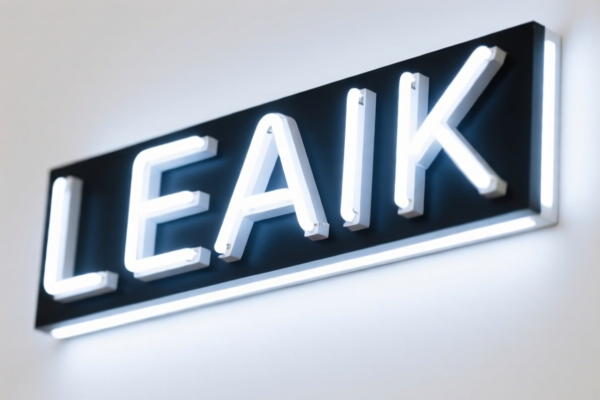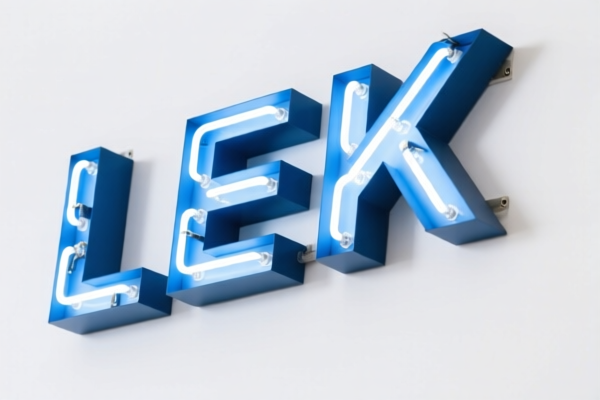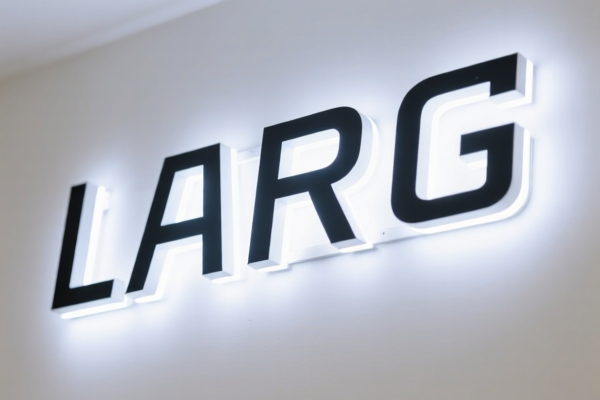| HS Code | Official Doc | Tariff Rate | Origin | Destination | Effective Date |
|---|---|---|---|---|---|
| 4911100080 | Doc | 37.5% | CN | US | 2025-05-12 |
| 4911998000 | Doc | 37.5% | CN | US | 2025-05-12 |
| 3919102055 | Doc | 60.8% | CN | US | 2025-05-12 |
| 3919905060 | Doc | 60.8% | CN | US | 2025-05-12 |
| 3926100000 | Doc | 35.3% | CN | US | 2025-05-12 |
| 3926909400 | Doc | 55.0% | CN | US | 2025-05-12 |




Office Signage
Office signage encompasses a broad range of displays used to communicate information within a workplace environment. These signs serve diverse purposes, from identifying personnel and departments to guiding visitors and ensuring safety.
Materials
A variety of materials are employed in the creation of office signage, each with distinct characteristics impacting durability, aesthetics, and cost:
- Acrylic: A versatile plastic known for its clarity, impact resistance, and ability to be backlit. Frequently used for reception area signs, door signs, and directory boards.
- Metal (Aluminum, Brass, Stainless Steel): Provides a professional, durable, and often more permanent solution. Common for exterior signs, lobby displays, and prestige signage. Aluminum is lightweight and cost-effective, while brass and stainless steel offer a higher-end aesthetic.
- PVC (Polyvinyl Chloride): A rigid plastic suitable for both indoor and outdoor use. Cost-effective and weather-resistant, often used for directional signs, safety signs, and temporary displays.
- Foam Board: Lightweight and affordable, ideal for temporary signage, event displays, and internal communications.
- Vinyl: Commonly used for adhesive lettering and graphics applied to glass doors, windows, or walls. Offers flexibility and cost-effectiveness for short-term messaging.
- Wood: Provides a warm, natural aesthetic, often used for reception area signs, executive offices, and branding displays.
- Glass: Used for frosted or etched glass signs, offering a sophisticated look for reception areas and executive suites.
Purpose & Function
The primary functions of office signage include:
- Identification: Clearly labeling departments, offices, restrooms, and other areas.
- Direction: Guiding visitors and employees to specific locations within the building.
- Information: Communicating important policies, procedures, and contact information.
- Branding: Reinforcing company identity and values through consistent visual messaging.
- Safety: Displaying emergency exits, safety protocols, and hazard warnings.
- Accessibility: Providing compliant signage for individuals with disabilities (e.g., ADA-compliant restroom signs).
Usage Scenarios
- Reception Areas: Reception signs, lobby directories, company logos, and welcome messages.
- Conference Rooms: Room numbers, capacity limits, and scheduling information.
- Restrooms: Gender-specific identification, accessibility symbols, and family restroom indicators.
- Break Rooms: Policies, guidelines, and kitchen appliance instructions.
- Hallways & Corridors: Department names, office numbers, and directional arrows.
- Entrances & Exits: Company logos, emergency exit signs, and visitor information.
- Parking Areas: Parking instructions, designated spaces, and visitor parking information.
Common Types
- Door Signs: Identify individual offices or rooms.
- Wall Signs: Display department names, company logos, or inspirational messages.
- Directory Signs: List employee names and contact information.
- Reception Signs: Welcome visitors and provide company information.
- Wayfinding Signs: Guide visitors and employees to specific locations.
- Safety Signs: Communicate emergency procedures and hazard warnings.
- ADA Signs: Comply with accessibility guidelines for individuals with disabilities.
- Digital Signage: Electronic displays used for dynamic messaging, announcements, and wayfinding.
- Acrylic Nameplates: Used for desk identification and office door signage.
- Braille Signage: Essential for accessibility, providing tactile information for visually impaired individuals.
Office signage generally refers to signs used within office environments for identification, direction, or information purposes. Based on the provided information, the following HS codes may be relevant:
- 9405612000: This HS code covers luminaires and lighting fittings, including searchlights and spotlights, and parts thereof, not elsewhere specified or included; illuminated signs, illuminated name-plates and the like, having a permanently fixed light source, and parts thereof not elsewhere specified or included: Illuminated signs, illuminated name-plates and the like: Designed for use solely with light-emitting diode (LED) light sources: Of base metal: Of brass. This code specifically applies to illuminated signs made of brass and designed for LED light sources. The tax rate details are: Basic tariff: 5.7%, Additional tariff: 25.0%, Additional tariff after 2025.4.2: 30%, Total tariff: 60.7%.
- 9405614000: This HS code also covers luminaires and lighting fittings, including searchlights and spotlights, and parts thereof, not elsewhere specified or included; illuminated signs, illuminated nameplates and the like, having a permanently fixed light source, and parts thereof not elsewhere specified or included: Illuminated signs, illuminated name-plates and the like: Designed for use solely with light-emitting diode (LED) light sources: Of base metal: Other. This code applies to illuminated signs made of base metals other than brass and designed for LED light sources. The tax rate details are: Basic tariff: 6.0%, Additional tariff: 25.0%, Additional tariff after 2025.4.2: 30%, Total tariff: 61.0%.
It is important to note that these HS codes apply specifically to illuminated signs with a permanently fixed light source (LED). If the office signage is not illuminated, other HS codes may be more appropriate.
Customer Reviews
No reviews yet.